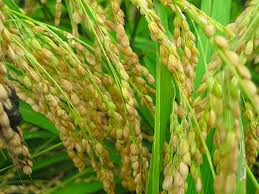Evaluation of rice dominance and its impact on crop diversity in north of Iran
Keywords:
Guilan, Shanon index, Leguminoseae, PoaceaeAbstract
Biodiversity and agriculture are related together and can influence each other. Sustainable farming is resulted from this relation. Crop variation can cause different responses against heat, cold, drought, pests and diseases. Needing to crops is more than before that its cause is world population growth and climate change is the biggest challenge in front of it and with increasing biodiversity can be dealt with it. The present study is done to evaluate the rice dominance and its effect on crop diversity in Guilan province for eight cities separately. The study is done using land area and species richness to getting diversity indexes, dominancy and evenness. The relevant indexes were calculated two times with considering area under rice and without it. Results indicated that 17 species of crops were cultivated and most of them belong to the Leguminoseae but most cultivation area consists of Poaceae (96%). Rice has the most area (about 90%) as the dominant species in Guilan province. Shanon, Simpson and Evenness were measured separately with and without rice presence and resulted as follows: with rice Shannon was 0.68, Simpson 0.16 and evenness 0.07; without rice 2.84, 0.8 and 0.32 respectively. In conclusion, dominant crop in Guilan province is rice and it affected on the crop diversity and makes it vulnerable.
References
Amanor, K., Wellared, K., Boef, W., De Bebbington, A., 1993. Cultivating knowledge. Genetic diversity, farmer experimentation and crop research. In: De Boef, W., Amanor, K., Wellard, K., Bebbington, A.,(eds) Cultivating knowledge: genetic diversity, farmer experi-mentation and crop research. Intermediate Technology publications, London, pp. 1–13
Asrat, S., Yesuf, M., Carlsson, F., Wale, E., 2010. Farmers’ preferences for crop variety traits: lessons for on-farm conservation and technology adoption. Ecol. Econ., 15, 2394–2401.
Bangwayo-skeete, P.F., Benzabih, M., Precious, Zikhli, 2012. Crop biodiversity, productivity and production risk: panel data micro-evidence from Ethiopia. Nat. Resour. Forum., 36, 263-273.
Bayush, T., 2007. Incentives for on-farm conservation in a center of diversity: A case study of durum wheat (Triticum turgiddumL.) landraces from East Shewa, Central Ethiopia. Norwegian University of Life Sciences (UMB), Norway.
Birol, E., Smale, M., Gyovai, A., 2006. Using a choice experiment to estimate farmers’ valuation of agricultural biodiversity on Hungarian small farms. Environ. Resour. Econ., 34, 439–469.
Di Falco, S., Perrings, C., 2003. Crop genetic diversity, productivity and stability of agroecosystems. A theoretical and empirical investigation. Scot. J. Polit. Econ., 50, 207–216.
Di Falco, S., Perrings, C., 2005. Crop biodiversity, risk management and the implica-tions of agricultural assistance. Ecol. Econ., 55, 459–466.
Di Falco, S., Bezabih, M., Yesuf, M., 2010. Seeds for livelihood: Crop biodiversity and food production in Ethiopia. Ecol. Econ., 698, 1695–1702
Di Falco, S., Chavas, J.P., 2009. On crop biodiversity, risk exposure, and food security in the Highlands of Ethiopia. Am. J. Agric. Econ., 913, 599–611.
Doi, R., Mizoguchi, M., 2013. Feasibility of system of rice intensi-fication practices in natural and socioeconomic contexts in Thailand. Int. J. Sust. Dev. World. Ecol., 20,433–441.
Kebu, B., 2011. Management and uses of farmers’ varieties in southwest Ethiopia: a climate change perspective. Indian. J. Tradit. Know., 10,133–145.
Lori, A.T., 1998. Cultivating diversity. Agrobiodiversity and food security. World Resources Institute, Washington.
Nastis, S.A., Michailidis, A., Mattas, Konstadinos. 2013. Land use policy., 32, 23-26.
Schlapfer, F., Tucker, M., Seidl, I., 2002. Returns from hay cultivation in fertilized low diversity and non-fertilized high diversity grassland. Environ. Resour. Econ., 21, 89–100
Shannon, C.E., 1948. A mathematical theory of communication. Bell. Syst. Tech. J., 27, 379–423.
Simpson, E.G., 1949. Measurement of diversity. Nature. 163, 688.
Singh, R.K., Turner, N.J., Pandey, C.B., 2011. ‘Tinni’ rice (Oryza rufipogon Griff.) production: an integrated sociocultural agro-ecosystem in eastern Uttar Pradesh of India. Environ. Manage., 49, 26-43.
Singh, R.K., Singh, A., Pandey, C.B. 2014. Agrobiodiversity in rice-wheat based agroecosystem of eastern Uttar Pradesh, India: implication for conservation and sustainable management. Int. J. Sust. Dev. World., 21, 46-59.
Smale, M., Hartell, J., Heisey, P., Senauer, B., 1998. The contribution of genetic resources and diversity to wheat production in the Punjab of Pakistan. Am. J. Agric. Econ., 80, 482–493.
Tilman, D., Wedin, D., Knops, J., 1996. Productivity and sustainability influenced by biodiversity in grasslands ecosystems. Nature, 379, 718–720.
Walker, B., Kinzig, A., Langdridge, J., 1999. Plant attribute diversity, resilience, and ecosystem function: The nature and significance of dominant and minor species. Ecosystems. 2, 95–113.
Widawsky, D., Rozelle, S., 1998. Varietal diversity and yield variability in Chinese rice production. Kluwer Academic Publishers, Norwell.
Zhu, Y., Chen, H., Fan, J., Wang, Y., Li, Y., Chen, J., Fan, J., Yang, S., Hu, L., Leung, H., Mew, T.M., Teng, P.S., Wang, Z. Mundt, C.C., 2000. Genetic diversity and disease control in rice. Nature, 406, 718-722.
Koocheki, A., Nassiri, M., Gliessman, S., Zarea, A., 2008. Agrobiodiversity of field crops: A case study for Iran. J. Sustain. Agr., 32, 95-122.
Nagendra, H., 2002. Opposite trends in response for the shannon and simpson indices of landscape diversity. Appl. Geography., 22, 175-186.
Nassiri, M., Koocheki, A., Mazaheri, D., 2005. Diversity of crop species in Iran. Desert. 10,33-50. (In Persian with English Summary)

Published
How to Cite
Issue
Section
License
Copyright (c) 2014 Ashkan Asgari, Abbas Ghafori

This work is licensed under a Creative Commons Attribution-NonCommercial-NoDerivatives 4.0 International License.



